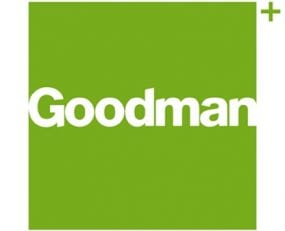
The shares of Australia’s Goodman Group surged 5.3% to A$10.6 on Friday, 17 August, hitting a multi-year high after the logistics property developer released a strong trading update for its fiscal year 2018.
In the twelve months ended June 30, 2018, group revenues rose 4.9% to A$2.67bn. The annual turnover included some fair value adjustments on investment properties, including joint ventures, which rose 50% to A$673.8m from A$446.7m one year earlier.
Meanwhile, operating profit stood at A$845.9m, up 9% against comparable fiscal 2017 numbers, boosting operating earnings per share (EPS), which soared 8.3% to 46.7 cents, based on a marginally higher share count.
Overseas activities contributed 63% to operating profit, with statutory income coming in at A$1.1bn. Notably, statutory profit rose significantly thanks to “strong property valuation gains” and other favourable adjustments.
Nonetheless, most of its growth was organic, as the group did not undertake any material acquisitions and divestments during the year.
Annual numbers were solid on all levels. Investors cheered at 2019 forecasts, with forward operating profit now expected at A$913m and operating EPS projected at 50 cents.
Annual proposed dividends rose to A$504m from A$463m in fiscal 2017. In its guidance, the company added that it forecasts “FY19 distribution of 30.0 cents per security (up 7% on FY18) with (the) payout ratio unchanged”.
Goodman is pulling out all the stops to be a truly global leader in industrial properties, and, as it said, its vision is “executed through the integrated ‘own+develop+manage’ business capabilities”.
“Rising urban populations and advances in technology have continued to drive the growth in e-commerce while automation and use of robotics in supply chains has improved the speed of delivery to consumers,” it said, adding that demand from customers has risen mainly for warehouses and industrial real estate close to major urban centres “which has been a key factor in Goodman’s operating performance in FY18.”
“At the same time, investment demand for logistics assets has continued to be strong, with further compression of capitalisation rates during FY18”. The weighted average capitalisation rate at June 30, 2018 was 5.5% (2017: 5.9%)
As of June 30, 2018, Goodman’s total assets under management (AUM), including directly owned assets, amounted to A$38.3bn (2017: A$34.6bn) while external AUM, excluding directly owned assets, stood at A$35.1bn (2017: A$30.5bn).
Asset pricing has meant that “development has continued to be the best way to access high quality assets in the target locations”. Its key operating regions are Australia and New Zealand, which are reported on a combined basis, Asia (Greater China and Japan), Continental Europe (primarily Germany, France and Poland), the United Kingdom and the Americas (North America and Brazil).
Earnings from property investment (32% of the total operating earnings) fell 3%, but management income rose 19% (27% of the total), with the larger chunk of core profits (41% of total operating earnings) up 2% against 2017 numbers.
It said that it maintained a prudent approach to development, including: “capital partnering of developments; limiting development commencements without a leasing commitment to supply constrained, well-located, proven logistics locations, where demand for high quality industrial properties has been strengthening; and targeting new developments in the large, wealthy consumer dominated cities around the world, with limited land supply.”
This has been reflected, it concluded, “in the fact that on completion 87% of completed developments in FY18 had been leased to customers, while 80% were developed on behalf of third parties or partnerships.”
Paper gains for shareholders currently hover around 25%, excluding dividends (its trailing/forward yield is around 2.9%), since it reported its annual results in the prior year.
Source: Transport Intelligence August 21, 2018
Author: Alessandro Pasetti